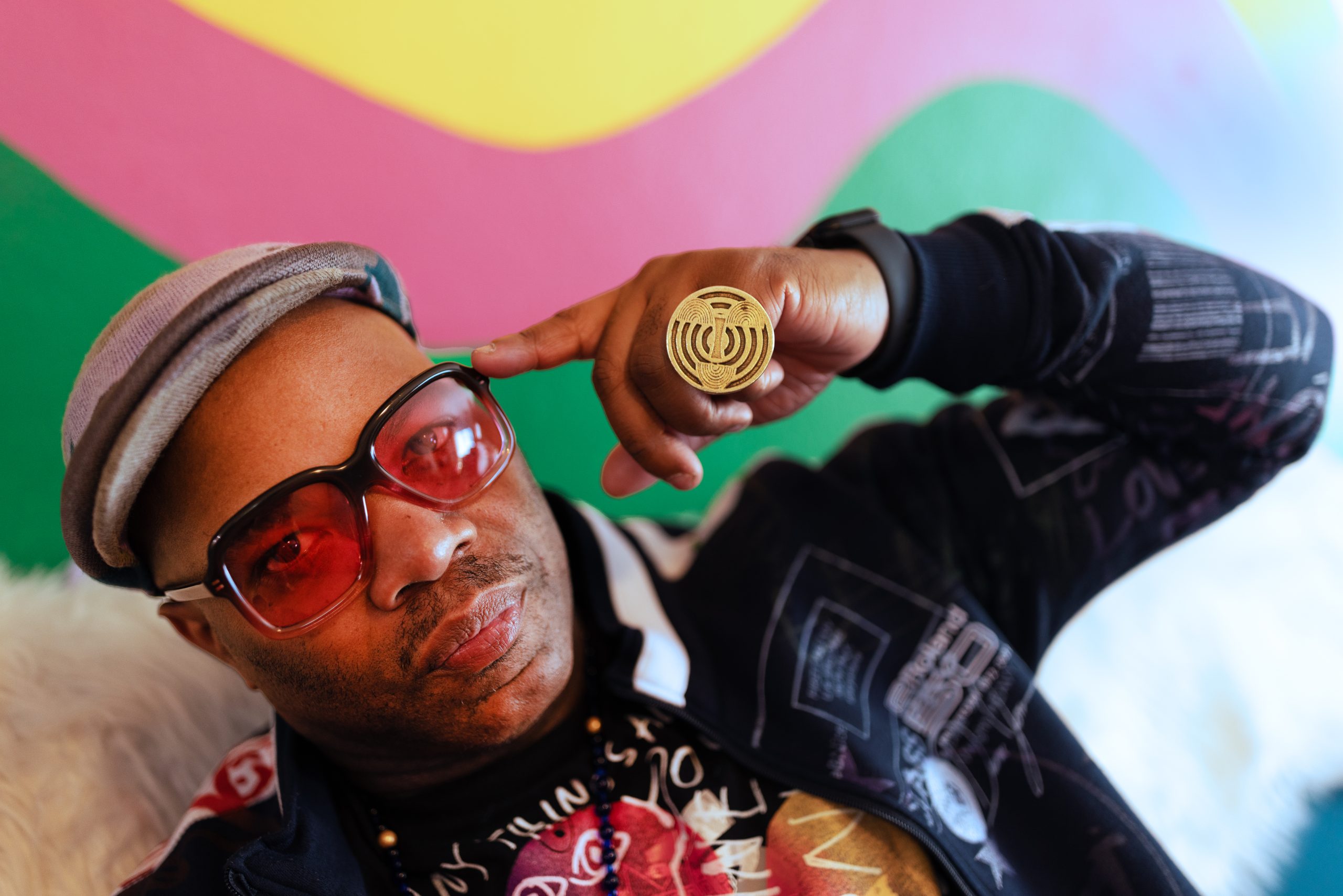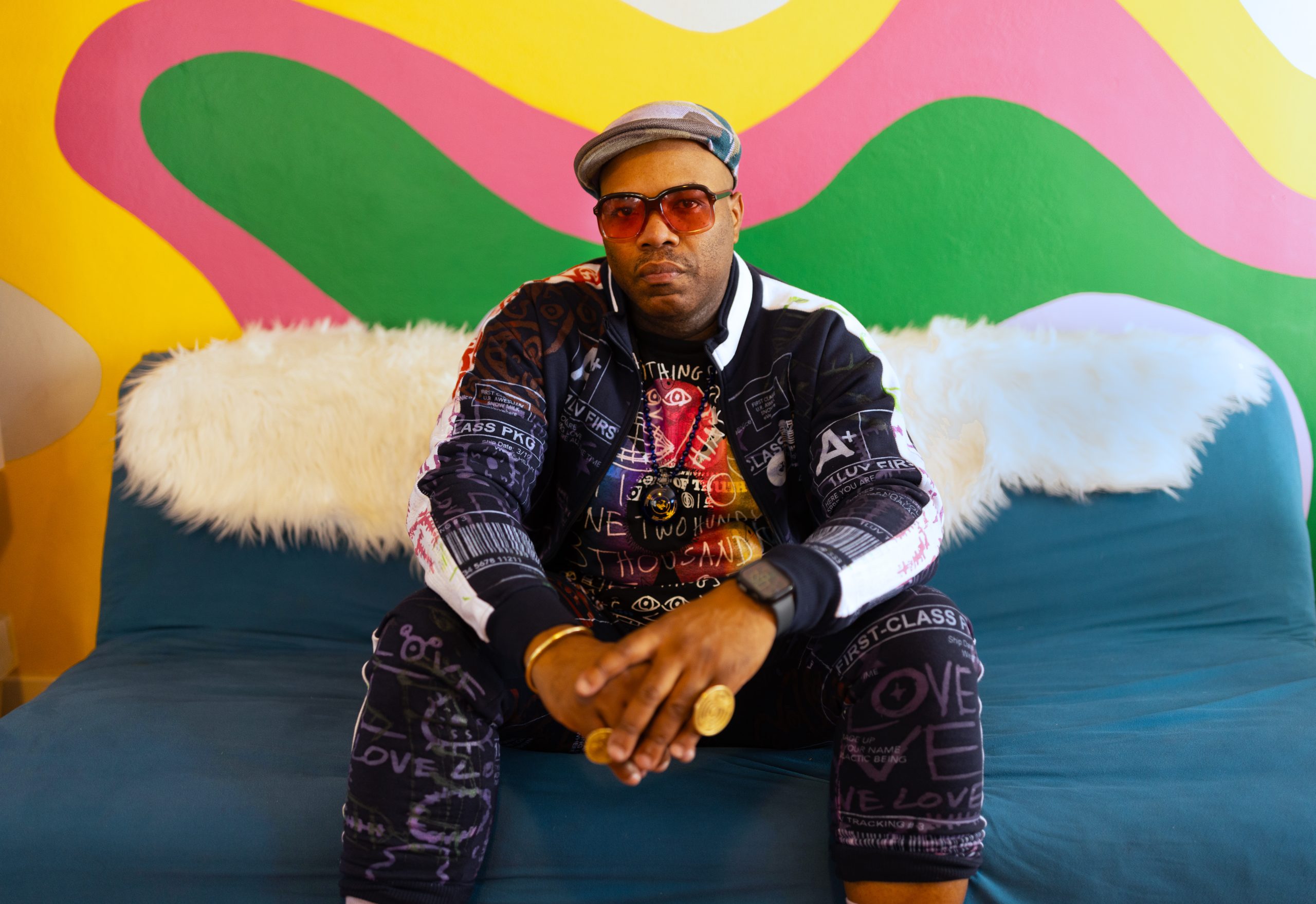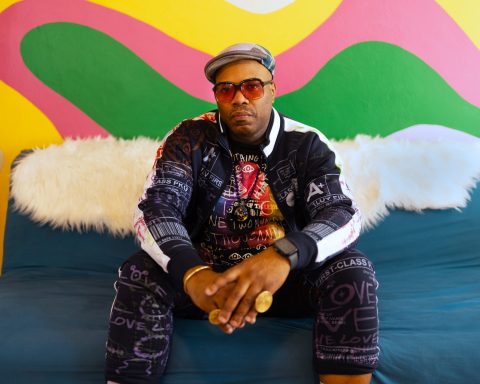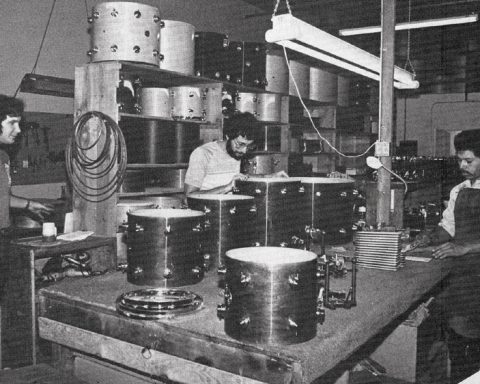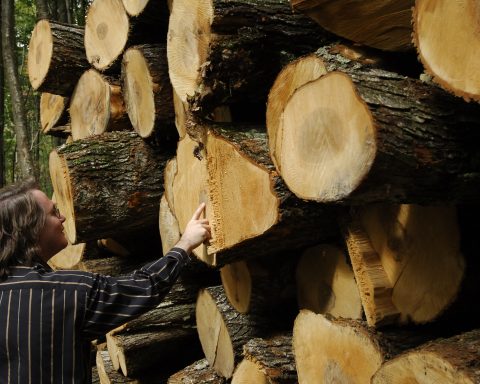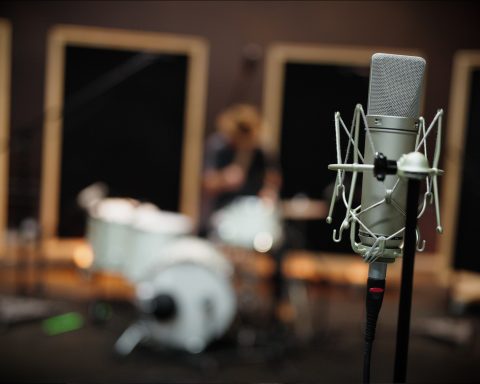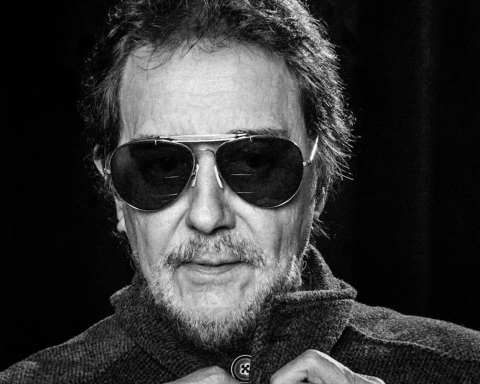Hybrid drumming fuses the traditional acoustic drum set with the latest digital percussion technology, enabling players to perform with the electronic sounds and processed textures that drive modern music styles. Since 2003, Roland sampling pads and acoustic triggers have revolutionized this style, and they’re regularly used everywhere, from indie gigs to arena stages.
Instruments like the SPD-SX PRO make powerful partners for hybrid drummers, allowing them to incorporate loops, one-shot sounds, and melodic phrases into their musical universes. Every drummer has a unique story about their approach to blending traditional and electronic elements. Daru Jones discusses his journey to working with Jack White, custom setups, and the importance of aesthetics.
The Backbeat
Where does your story begin?
“I started playing at the age of four at church. My mom and dad are both musicians, and they play organ and piano. I had a lot of cousins and uncles who played drums at church. And I was fascinated by the sound and the animation, how they’re moved around and keeping time. It was just this vibe. So, I started playing. I learned how to play by ear. I didn’t have any training until I got in middle school. My mom put me in chart reading lessons, but I didn’t stick with it. I did it for like a year.
I started out playing only gospel; everything outside of gospel was secular music, and we were told it was a no-no to listen to. But of course, when I went to school, I had a lot of friends who were into other genres, and I remember discovering hip-hop. Eventually, I found out about different rappers. What really fascinated me about that genre was the fashion. I didn’t really care about the lyrics. They just looked cool. They had on the big necklaces—the dookie chains—and the gold rings.”
“Eventually, I gravitated to the producers. But at that time, a lot of the lyrics had a parental advisory. And I remember finding out, in the ‘90s, those producers were sampling jazz—Clyde Stubblefield, Jabo. I didn’t even know who the drummers were, but I was excited. I remember hearing those beats, and one of my mentors gifted me the Buddy Rich Memorial Series VHS tape. That’s how I found out about Buddy Rich, Omar Hakim, and Vinnie Colaiuta. And I was like, ‘You mean there’s music that features the drummer?’
I begged my mom to give me some instructional videotapes from the drum store. She bought me Terry Bozio solo drums because there was no other instrumentation. It was just drums, so it wasn’t secular.”
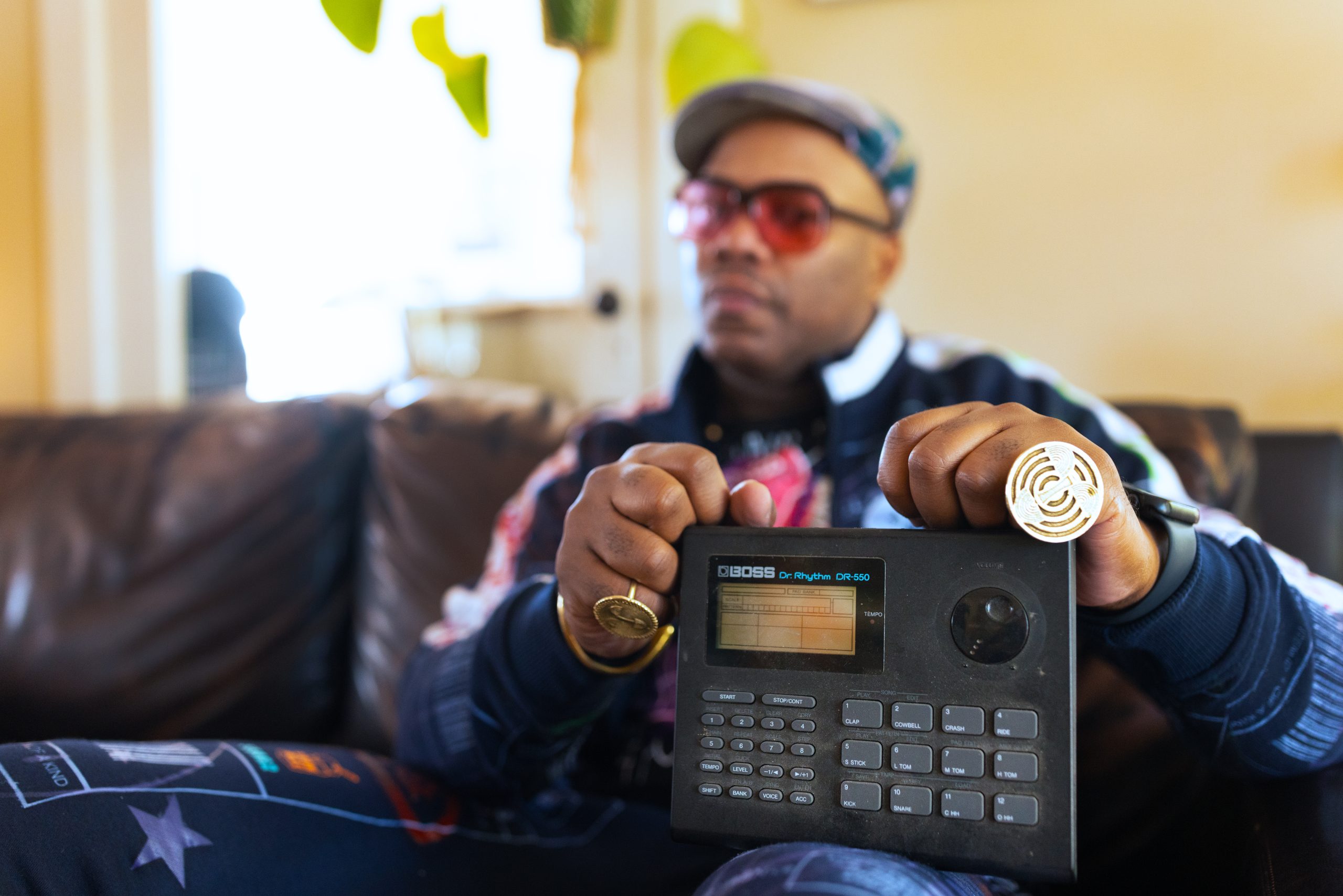
The Mashup
What does hybrid drumming mean to you?
“There was a shift in the eighties when people were using live drums on records, but then the frequency changed. Drums started becoming electronic with drum machines. My mom put me in organ lessons, and I’ll never forget, my organ teacher brought a BOSS Dr. Rhythm DR-550 drum machine. He wanted to play beats so we could keep time. I was like, ‘You mean to tell me there’s a machine that can play drums by itself?’ I begged my mom to get me one, and she did.
Then, I started learning about the community through MTV videos. You started seeing things like Bobby Brown’s “My Prerogative” and electronic drums. Eventually, they implemented electronic drums with acoustic drums little by little, sometimes an acoustic drum kit with just one pad. It was really cool to explore and see drums, not just out of the machine, but people playing them live by hitting them.
When my mom bought me that BOSS drum machine, the stores were carrying other drum machines called the Roland R-5 and R-8. It was a step up, and at the time, a lot of producers were using it. I begged my mom to give me one of those, and she helped me get the Roland R-5.
I started studying Teddy Riley’s new jack era beats. When he made his tracks, it would be all these drums—sampled drums, programmed drums, and they were using those machines.”
THE ART OF COMPROMISE
From Jack White to Pete Rock, what have you learned from the artists you've worked with over the years?
“Play your part. Be a team player. It’s not about what you want to do. It’s about what your boss wants. You want your employer to be happy, because if they’re happy, they’re going to tell their friends. We’re all connected. The industry is small. So, if you do good work here, you’re going to get a recommendation somewhere else.
Respect the original compositions. If I were playing a Jack White tune, although he brought me in because he wanted me to bring my hip-hop influence to rock and roll, I would still respect the original beats that Meg White played. Because I know that’s what the audience wants to hear.
Even when I’m playing in hip-hop settings, I’m listening to the original tracks by Pete Rock or whoever and trying to emulate that. It’s very important to pay attention to detail. I feel I’ve got a couple more jobs in the next person because I know the music before I get to rehearsal and play the music just like the records. It’s just precision and paying attention to detail.”
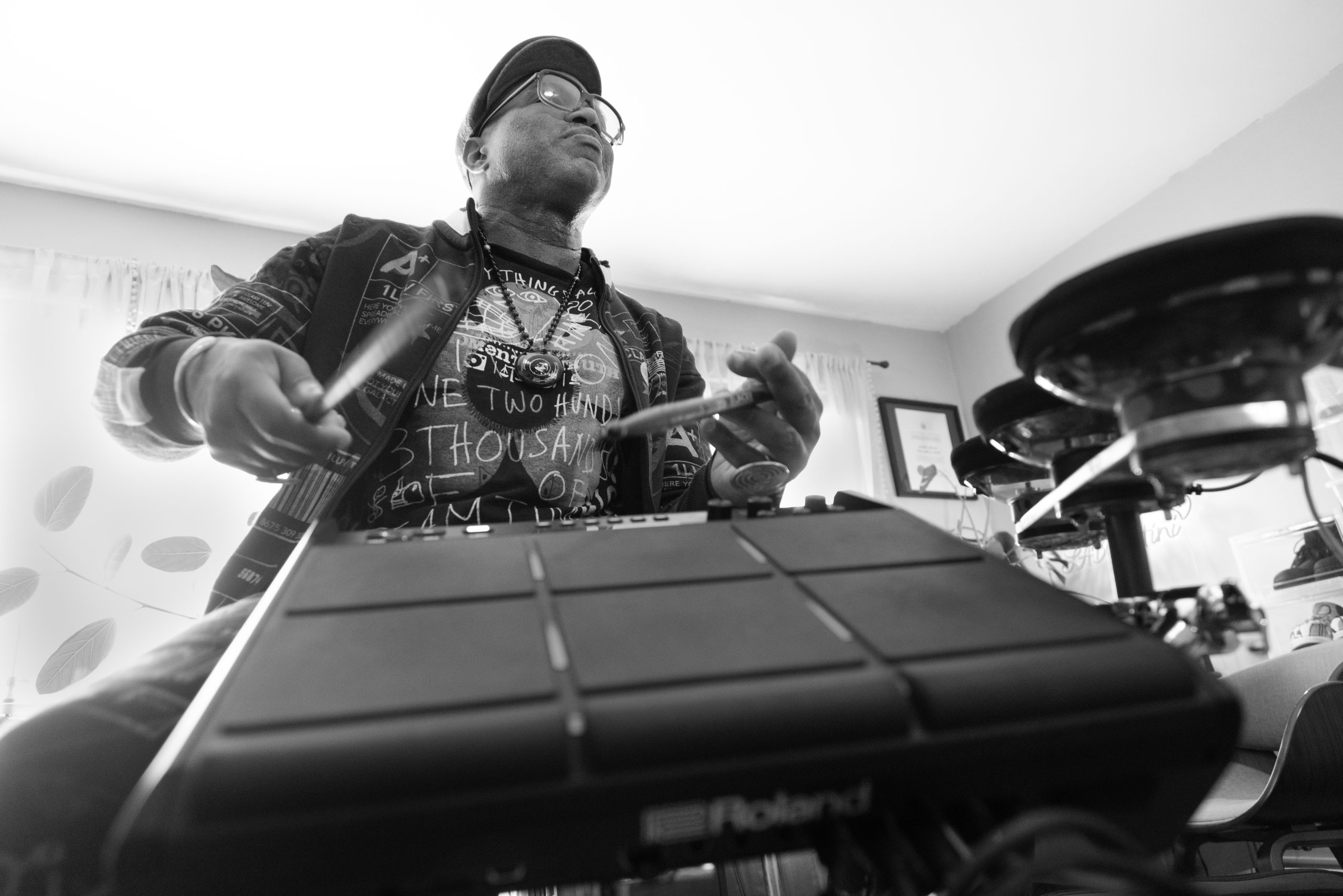
SPOTLIGHT: SPD-SX PRO
How do you use the SPD-SX PRO in your shows?
“When I started playing with more hip-hop artists, I got the opportunity to work with a group called Slum Village from Detroit, Michigan. The producer was J Dilla, who passed away, but is very influential in the drum and hip-hop community because he would make his drum patterns unquantized and sloppy, not on beat, like a real drummer.
Then, I worked with Talib Kweli, who was in a group called Black Star with Mos Def. I started playing with a lot of ’90s hip-hop artists. Sometimes, they would have claps, finger snaps, or 808s. On my rider, I had the SPD-20. So, when I was playing the track set that had some claps, I could still respect the original composer and play the claps and 808s.
Eventually, Roland kept expanding and getting better, making new equipment. I found out about the SPD-S, where you could sample, and that was a game-changer. I could trigger samples from the pad. I became the go-to guy in New York to music direct and put bands together for hip-hop groups. The SPD definitely enhanced the hip-hop genre.”
No fear
Sometimes, you use the SPD-SX PRO as your entire kit. How does that setup differ from using it for auxiliary sounds?
“I do a lot of drum DJ sets where I’m playing along with the DJ. Sometimes, when you mention drums with a DJ, the venue people panic. They don’t have microphones or a proper sound system. No fear. I just have a pad. You can plug up and control the volume.
You can sample drums or use the SPD’s preset drums. Now I can use the SPD-SX PRO like a drum kit and still play like I’m playing acoustic drums. I have a lot of sound options. which is great. I can switch to the ’80s drum sounds or my acoustic drum sounds as samples.”
ROAD READY
Can you tell me about your custom PDP kit?
“I had the pleasure of working with PDP on my first Daru Jones New Yorker, which came out in 2014 in Gold to Black Sparkle Fade. When I started working with Jack White, I just wanted better everything. I told DW I needed a compact drum kit because I’m in New York City playing sometimes three gigs a night, and I didn’t want to have to haul a big, bulky kit around. And I said, ‘Man, it would be great to just build with y’all and do a kit.’ The opportunity came, and everything is lightweight.”
“Almost a decade later, we came out with the DJNY II. One of my favorite features on this kit is the snom, so you can make it either a tom or a snare sound. The blue fade color was definitely inspired. When I toured with Jack White, we had a color palette that we would wear—all blues on stage. So, I wanted to have a kit that I could use if I toured with him.
Obviously, when I’m playing with Jack White, my drum sizes are a lot bigger cause it’s rock and roll. We also have B-shows or side gigs, and I wanted to be able to use my kit. You can put it in three bags and carry it from shoulder to shoulder.
I wanted my drum kit to advocate for drummers’ finding their own identity. There are so many different options. You can put different heads on them. You could make each drum a snare drum or floor tom. And then you can add percussion. It’s a versatile kit. It works in clubs, and it sounds great.”
A NEW IDENTITY
You play your kit at a very interesting angle. How did you develop that unique style?
“That came in the mid-2000s when I started working with Slum Village. Everybody was using the five-piece or the Steve Gadd. It was a certain configuration that was around, and that’s what I used.
I saw Questlove from the Roots, and he just had a snare drum and a floor tom. I was like, “Where’s the rest of this guy’s drum kit?” Then I understood he was playing minimal gear because the music didn’t require a lot of fills.
The hip-hop community is all about being original and not being a copycat. I downsized my kit like Questlove to a snare drum and a floor tom, and I was like, man, I don’t want to ever be in the same room, and Quest be mad at me thinking I’m copying off his setup. So, I wondered how I could take this configuration and make it my own.
There are two different stick grips. There’s the match grip, then there’s the traditional grip. A lot of the old school drummers, like Buddy Rich and Philly Joe Jones, play this traditional grip, and they would angle the snare drum sideways to match the grip. It’s a marching thing.”
“I was like, what if I turn the snare so it’s sloped down to match the grip, and then what if I do the same thing to the rest of the drum kit? It’s basically all for looks. I just don’t want my drums to look like Questlove’s, and I had to figure out how to play them. It forced me to be creative to figure out how I could get a lot of sounds out of minimal gear versus having all these drum options.
And it made me be intentional when I hit the drum because the stuff is not easy to get to. If I fumble, it’s going to be caught on tape, and I’m going to go viral for it. I just wanted to have an identity in one of my drums. If people walk in the room, they may not know who’s playing, but when they see the drum kit, they’re like, okay, we know who’s here. It was an identity purpose, same as with fashion.”
World's Quietest Drum Battle
You recently performed on the Roland stage at NAMM. What was that experience like?
“NAMM was so killing. I’m always excited to go in that room with DW and Roland because they always have the flyest stuff. It was such an honor to be included and continue to build my relationship with the Roland family.
I like where Roland is going, the expansion of how they’re moving along with the times and thinking of ways to push forward and not be stagnant. It was great playing the VQD in the World’s Quietest Drum Battle, where you had to have headphones on to hear the drums.
I honestly didn’t know what to expect. I thought I was going to co-host and judge alongside Thomas Lane, so I was caught off guard when I found out I’d be participating, and even more surprised to be the first drummer to break it in for Round 1! I had to figure things out on the fly.
It would’ve been nice to have a little more time to navigate and dial in the new drum kit with my signature angled setup and just to explore the functionality and new settings and really lock in on a game plan for the beat I was going to play. But that’s how life is sometimes—you get thrown in the ring, literally!”
SPINNING POSITIVITY
You have your own label. How did that come about?
“Rusic Records is my label, and I wanted to start producing my own stuff. I want to have a label where people know it’s going to be positive. The beats will still have the same aggression and gritty, hardcoreness, but I want the message to be edifying.
It’s soulhop—I use that terminology to describe my playing. It’s a combination of soul and hip-hop because I love that hip-hop aggression, that loopy feel, and just that feeling when you hear classic hip-hop. It makes you get excited. People know this is a safe space where they can play this in front of their kids without worrying about profanity.
I remix classic hip-hop tracks where I reverse the profanities or something that’s negative. I find a way to balance it out because it’s just a part of the culture. People are gonna express themselves. Although I don’t express myself that way, I still want to embrace the culture without judging, find a balance, and let people be themselves.”
